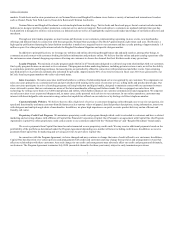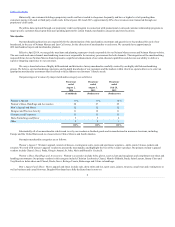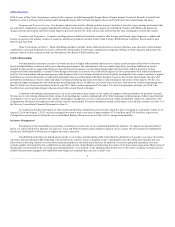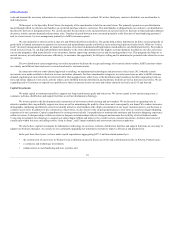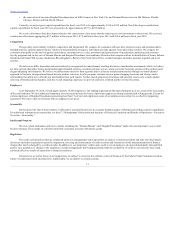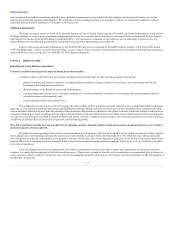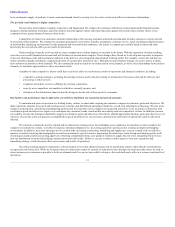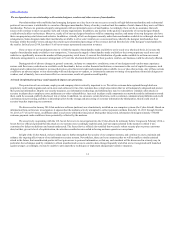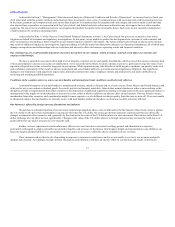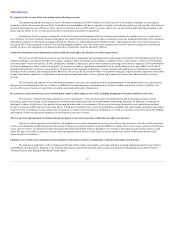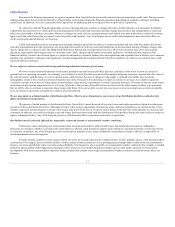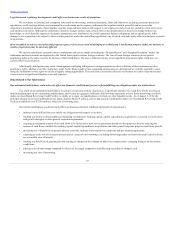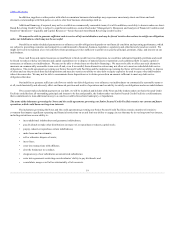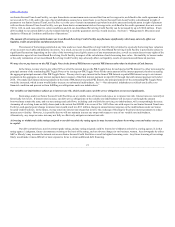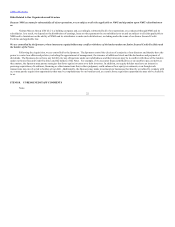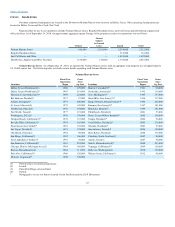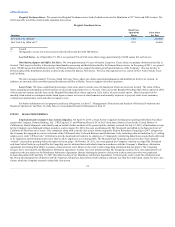Neiman Marcus 2013 Annual Report Download - page 18
Download and view the complete annual report
Please find page 18 of the 2013 Neiman Marcus annual report below. You can navigate through the pages in the report by either clicking on the pages listed below, or by using the keyword search tool below to find specific information within the annual report.
Table of Contents
Pursuant to the Program Agreement, we receive payments from Capital One based on sales transacted on our proprietary credit cards. We may receive
additional payments based on the profitability of the portfolio as determined under the Program Agreement depending on a number of factors, including
credit losses. In addition, we receive payments from Capital One for marketing and servicing activities we provide to Capital One.
In connection with the Program Agreement, we have changed and may continue to change the terms of credit offered to our customers. In addition,
Capital One has discretion over certain policies and arrangements with credit card customers and may change these policies and arrangements in ways that
affect our relationships with these customers. Moreover, changes in credit card use, payment patterns and default rates may result from a variety of economic,
legal, social and other factors that we cannot control or predict with certainty. Any such changes in our credit card arrangements may adversely affect our
credit card program and ultimately, our business.
Credit card operations such as our proprietary program through Capital One are subject to numerous federal and state laws that impose disclosure
and other requirements upon the origination, servicing and enforcement of credit accounts and limitations on the maximum amount of finance charges that
may be charged by a credit provider. The Dodd-Frank Wall Street Reform and Consumer Protection Act, which was enacted in July 2010, increased the
regulatory requirements affecting providers of consumer credit. These changes significantly restructured regulatory oversight and other aspects of the
financial industry, created a new federal agency to supervise and enforce consumer lending laws and regulations and expanded state authority over consumer
lending. Any regulation or change in the regulation of credit arrangements that would materially limit the availability of credit to our customer base could
adversely affect our business.
We are subject to risks associated with owning and leasing substantial amounts of real estate.
We own or lease substantial amounts of real estate, primarily our retail stores and office facilities, and many of the stores we own are subject to
ground leases or operating covenants. Accordingly, we are subject to all of the risks associated with owning and leasing real estate. In particular, the value of
the relevant assets could decrease, or costs to operate stores could increase, because of changes in the supply or demand of available store locations,
demographic trends or the overall investment climate for real estate. Pursuant to the operating covenants in certain of our leases, we could be required to
continue to operate a store that no longer meets our performance expectations, requirements or current operating strategies. The terms of our real estate leases,
including renewal options, range from two to 130 years. We believe that we have been able to lease real estate on favorable terms, but there is no guarantee
that we will be able to continue to negotiate these terms in the future. If we are not able to enter into new leases or renew existing leases on terms acceptable
to us, our business and results of operations could be adversely affected.
We are dependent on a limited number of distribution facilities. The loss of, or disruption in, one or more of our distribution facilities could adversely
affect our business and operations.
We operate a limited number of distribution facilities. Our ability to meet the needs of our retail stores and online operations depends on the proper
operation of these distribution facilities. Although we believe that we have appropriate contingency plans, unforeseen disruptions in operations due to fire,
weather conditions, natural disasters or for any other reason may result in the loss of inventory and/or delays in the delivery of merchandise to our stores and
customers. In addition, we could incur higher costs and longer lead times associated with the distribution of our products during the time it takes to reopen or
replace a damaged facility. Any of the foregoing factors could adversely affect our business and results of operations.
Our business may be adversely affected by catastrophic events and extreme or unseasonable weather conditions.
Unforeseen events, including war, terrorism and other international conflicts, public health issues and natural disasters such as earthquakes,
hurricanes or tornadoes, whether occurring in the United States or abroad, could disrupt our supply chain operations, international trade or result in political
or economic instability. Any of the foregoing events could result in property losses, reduce demand for our products or make it difficult or impossible to
obtain merchandise from our suppliers.
Extreme weather conditions in the areas in which our stores are located, particularly in markets where we have multiple stores, could adversely affect
our business. For example, heavy snowfall, rainfall or other extreme weather conditions over a prolonged period might make it difficult for our customers to
travel to our stores and thereby reduce our sales and profitability. Our business is also susceptible to unseasonable weather conditions. For example, extended
periods of unseasonably warm temperatures during the winter season or cool weather during the summer season could render a portion of our inventory
incompatible with those unseasonable conditions. Reduced sales from extreme or prolonged unseasonable weather conditions could adversely affect our
business.
17


